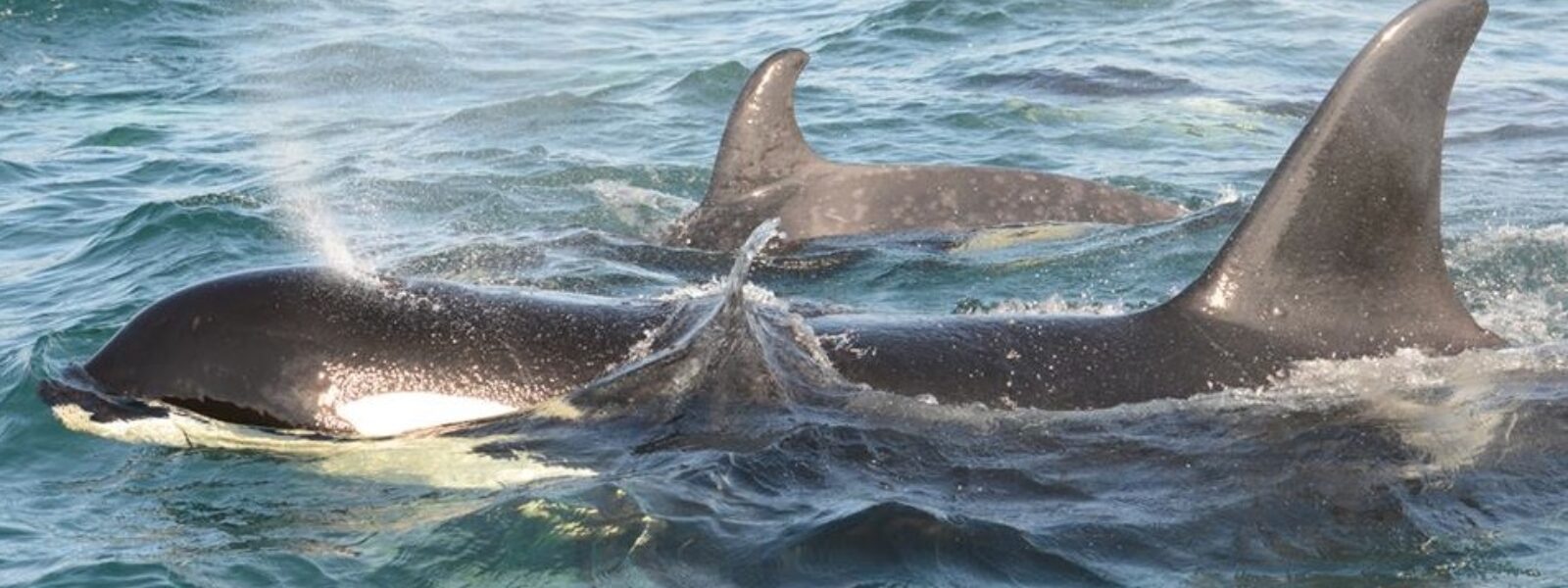

This is the second installment in our series spotlighting successful cetacean retirement, rehabilitation and release stories. Companies like SeaWorld claim that releasing orcas and dolphins to sanctuaries for retirement is dangerous, "irresponsible" and even impossible. However, these stories reveal the truth: that it is possible, and in the best interests of the cetaceans, to retire them permanently and even release them back into their wild ocean homes when possible.
Click here to read the first story.
Springer is British Columbia’s arguably most beloved Northern Resident orca. This female killer whale achieved local fame sixteen years ago when she became the first member of her species to be released into the wild and back into her pod after spending time in human captivity.
Locals first discovered Springer in January 2001, when reports circulated of a young orca in poor condition floating listlessly in the waters of Puget Sound. The orphaned whale quickly became talk of the town, with the Seattle Times even describing her as a whale with "bad skin, worms in her stool and bad breath."
Despite the fact that she was located in a highly-trafficked shipping area, not all parties wanted to intervene on Springer’s behalf. In The Springer File, non-profit organization Orca Conservancy outlines the overall Springer saga and some of the initial ideas that were floated for Springer’s fate. There were aquariums vying to add Springer to their collection of incarcerated animals. Some activists pushed to leave Springer alone entirely, with the vague hope that the sick whale would find a way to return to her family independently.
Luckily for Springer, not everybody thought the orca’s fate should be so black-or-white. A group of scientists and activists, spearheaded by Orca Conservancy, OrcaLab, and the Free Willy-Keiko Foundation and together called the Orphan Orca Fund, saw Springer’s plight as a chance to rehabilitate an ailing cetacean and return her to her habitat. Springer was in bad health, very young, and a considerable distance from her pod; all of these factors led to the group’s belief that the best thing for Springer would be a carefully-orchestrated intervention.
Senator Maria Cantwell and the Canadian Consulate in Seattle, and specifically Patrick Higgins, were all instrumental in turning the dreams into reality to help save Springer. With political momentum behind the effort, NOAA (the National Oceanic and Atmospheric Administration) was convinced to act.
The National Marine Fisheries Service team moved Springer from the Sound to a netted ocean enclosure in Manchester, Washington, where researchers focused not only on improving her physical condition but also on redirecting her skewed social inclinations, as she had adopted tendencies to play with boats and pieces of driftwood while lost for lack of other killer whales.
While in human care, Springer was identified as a member of the A4 pod of Northern Resident killer whales of northern British Columbia, and was photographically matched to juvenile whale, A73, whose mother had died.
The decision to rehabilitate an animal as large as a killer whale did not come lightly. Funds had to be secured to cover a variety of major costs: the crane-barges needed to transport the whale, veterinary care, foam padding for the crane-barge, and of course, salmon. The Orphan Orca Fund, comprised of seven groups dedicated to returning Springer to the wild, contributed $66,000 in matching funds to secure these grants and the overall contributions to this project amounted to an “exceptional” effort.
In July 2002, Springer demonstrated enough significant progress and physical strength to be released back into Canadian waters. Her skin had cleared up, she had gained weight, and she could hunt. On the day that was announced for her release, some members of Springer’s family - the A4 pod, identified acoustically - appeared in the waters of Johnstone Strait of Vancouver Island, very close to where Springer was being held.
After months of effort, money, and a delayed release due to mechanical issues with a tugboat, Springer was finally allowed to go free. She quickly reunited with members of her family, finding a pod that included her grandmother and “distant cousins,” and in 2013, Springer delighted the conservation community with the arrival of a baby calf, Spirit (A104). Four years later, she gave birth to a second baby. And in June 2017, she was seen with calf number two!
On the subject of returning orcas to the wild, head of the Cetacean Research Program with Fisheries and Oceans Canada, John Ford, gave his approval to reintroduction efforts, saying:
"It gives us hope that if such an event happens in the future, provided that all the right bits are in place—that is, knowing who the animal is and what group it comes from—that these kinds of efforts can be successful."
Keep checking out our Freeing Dolphins and Whales from Captivity campaign page for our next installment of our successful rehabilitation and release stories.
Pictured is Springer with her calf in the summer of 2017, by Lisa Spaven, Department of Fisheries and Oceans Canada.